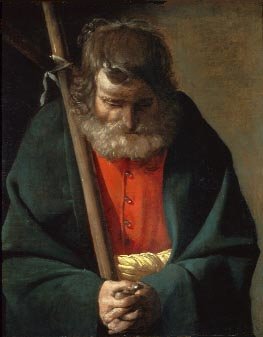The story of St. Philip the Apostle

Philip was a native of Bethsaida on the Sea of Galilee, as were Peter and Andrew. On the day after Peter's call, Jesus found Philip and said to him, "Follow me." Philip obeyed and a little later told Nathanael about Jesus. Sceptical, Nathanael asked, "Can anything good come out of Nazareth?" Philip replied, "Come and see." This is the invitation of St. Philip's Parish: "Come and see!" (John 1:43-46 ).
Philip is listed among the twelve in Matthew 10.2-4, Mark 3.14-19 and Luke, 6.13-16. Acts 1.13 also mentions Philip as belonging to the disciples who were at Pentecost. Beyond this, only the Gospel of John mentions Philip.
"Where are we to buy bread for these people to eat?" Jesus said to Philip as they faced the large crowd needing food. (The gospel says that Jesus did this to test Philip.) Philip answered, "Six months' wages would not buy enough bread for each of them to get a little." (John 6.5-7)
When Greeks came to Philip and asked to see Jesus, Philip reported this to Andrew and they both told Jesus (John 12.21). Was Philip a little shy?
During the Last Supper, after Jesus spoke about knowing and seeing the Father, it was Philip who said, "Lord, show us the Father, and we will be satisfied." Jesus said, "Have I been with you all this time, Philip, and you still do not know me? Whoever has seen me has seen the Father. How can you say, 'Show us the Father'?" (John 14.8-9)
Ancient traditions about Philip are confused with those concerning Philip the deacon and evangelist. One of the two Philips was buried in Hieropolis in Phrygia in Asia Minor. Some ancient writers say that Philip the apostle had three daughters, yet Acts 21.8-9 mentions four daughters of Philip the deacon and evangelist, which one tradition also says were buried in Hieropolis.
According to legend, Philip was preaching in Hieropolis together with Bartholomew, and through prayer killed a large serpent in a temple devoted to serpent worship. Philip also healed many of snake bite. Angered, the city governor and its pagan priest had Philip and Bartholomew crucified. As the two disciples were on the crosses, an earthquake knocked everyone to the ground, and Philip prayed for their safety. Seeing the earthquake abate, the people demanded that Philip and Bartholomew be released. Bartholomew survived, but Philip died.
Philip's alleged remains were later moved to the Basilica of the Twelve Apostles in Rome, which was originally dedicated to Saints Philip and James (James the younger). So the two saints have come to be celebrated on the same day.
Philip is the patron of hatters, pastry chefs, the nations of Luxembourg and Uruguay, and many churches, schools and hospitals throughout the world.
The Roman Catholic church moved the traditional date away from 1 May, as in 1955 May Day was dedicated to St. Joseph the Worker. St. Philip is now commemorated by the Roman Catholics on 3 May, the Eastern churches on 14 November and Anglicans on 1 May or 3 May.
Illustration: Georges de La Tour, Saint Philip, c. 1625, Oil on canvas, 25 x 21 inches, Chrysler Museum of Art, Norfolk, Virginia